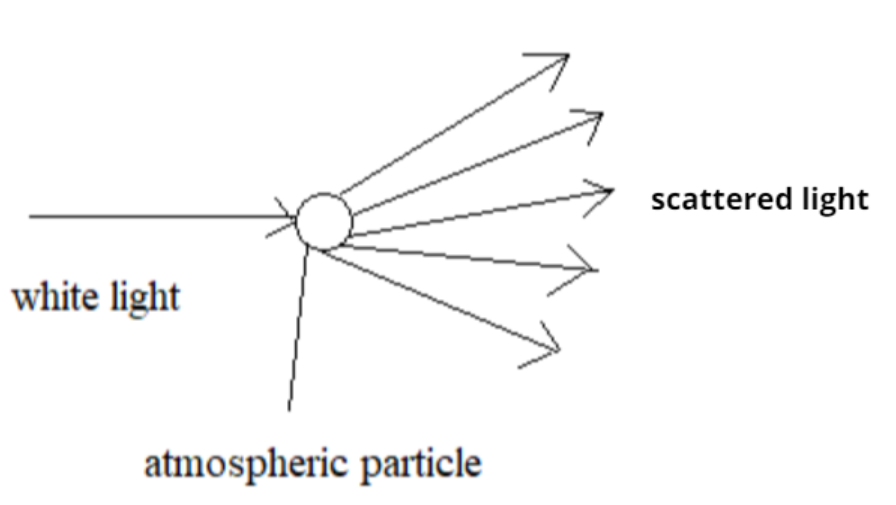
What is meant by scattering of light? Use this Phenomenon to explain why the clear sky appears blue or the sun appears reddish at sunrise.
Answer
578.1k+ views
Hint: Scattering of light is the incident in which light rays get deviated from its straight path on striking an obstacle like dust or gas molecules, water vapours etc. By which they got scattered in different colours of light.
Complete step by step answer:
Scattering is the phenomena in which light ray is redirected in all other directions on passing through particles of dimensions comparable to the wavelength of the light.
Due to particles present in the atmosphere or by atmospheric scattering blue light is scattered the most while red light is scattered the least.
The scattered light colour depends on the size of the Scattering particles. The particles of very small size scatter mainly blue light whereas, the particles of larger size scatter lights of longer wavelengths. The sky appears blue because the fine particles in the atmosphere scatter blue light most among all the components of white light.

Figure: Scattering of light
At Sunrise, the sun is located near the horizon. Hence, the light has to travel a long distance through the Earth's atmosphere at the time of sunrise or sunset. When sunlight falls on suspended atmospheric particles, the blue colour light scatters out in the atmosphere, while the red colour light scatters less and reaches the eyes of the observer on the surface of the Earth.
Hence, when this less scattered red light reaches the eyes of the observer, the sun and its surroundings appear reddish.
Note:
Atoms or molecules which are exposed to light absorb light energy and re-emit light in different directions with different intensity. This is the Phenomena of Scattering.
Complete step by step answer:
Scattering is the phenomena in which light ray is redirected in all other directions on passing through particles of dimensions comparable to the wavelength of the light.
Due to particles present in the atmosphere or by atmospheric scattering blue light is scattered the most while red light is scattered the least.
The scattered light colour depends on the size of the Scattering particles. The particles of very small size scatter mainly blue light whereas, the particles of larger size scatter lights of longer wavelengths. The sky appears blue because the fine particles in the atmosphere scatter blue light most among all the components of white light.

Figure: Scattering of light
At Sunrise, the sun is located near the horizon. Hence, the light has to travel a long distance through the Earth's atmosphere at the time of sunrise or sunset. When sunlight falls on suspended atmospheric particles, the blue colour light scatters out in the atmosphere, while the red colour light scatters less and reaches the eyes of the observer on the surface of the Earth.
Hence, when this less scattered red light reaches the eyes of the observer, the sun and its surroundings appear reddish.
Note:
Atoms or molecules which are exposed to light absorb light energy and re-emit light in different directions with different intensity. This is the Phenomena of Scattering.
Recently Updated Pages
Master Class 12 Business Studies: Engaging Questions & Answers for Success

Master Class 12 Economics: Engaging Questions & Answers for Success

Master Class 12 English: Engaging Questions & Answers for Success

Master Class 12 Maths: Engaging Questions & Answers for Success

Master Class 12 Social Science: Engaging Questions & Answers for Success

Master Class 12 Chemistry: Engaging Questions & Answers for Success

Trending doubts
What are the major means of transport Explain each class 12 social science CBSE

Which are the Top 10 Largest Countries of the World?

Draw a labelled sketch of the human eye class 12 physics CBSE

How much time does it take to bleed after eating p class 12 biology CBSE

Explain sex determination in humans with line diag class 12 biology CBSE

Differentiate between homogeneous and heterogeneous class 12 chemistry CBSE




